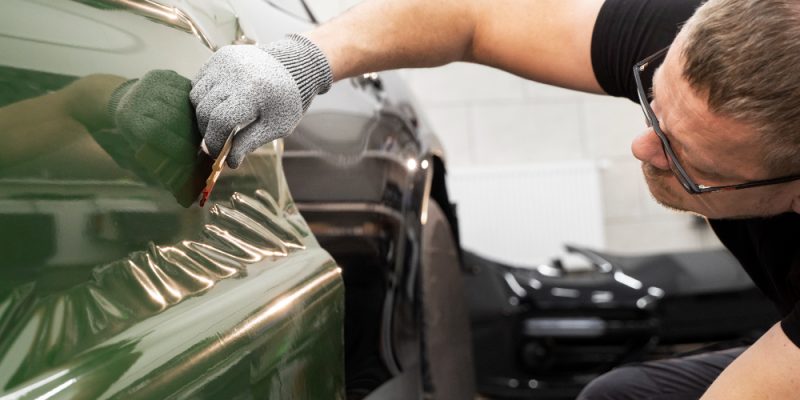Disadvantages of Ceramic Coating Exposed: 10 Hidden Pitfalls Revealed

Ceramic coating has emerged as a popular solution for protecting automotive surfaces, promising unparalleled shine and durability. However, beneath its glossy facade lie several drawbacks that are often overlooked. In this comprehensive guide, we delve deep into the darker side of ceramic coating, exposing ten hidden pitfalls that every car owner should be aware of. From misconceptions to maintenance woes, we uncover the truth behind the disadvantages of ceramic coating.
Disadvantages of Ceramic Coating: High Initial Cost
One of the primary drawbacks of ceramic coating is its substantial initial cost. Unlike traditional waxing or sealants, ceramic coating requires professional application and premium-quality materials, driving up the expenses significantly. While it may seem like a worthwhile investment for long-term protection, the upfront financial commitment can deter many budget-conscious consumers.
Disadvantages of Ceramic Coating: Limited Scratch Resistance
Despite claims of superior scratch resistance, ceramic coatings are not impervious to scratches and swirl marks. While they may offer some level of protection against light abrasions, they are not immune to the hazards of everyday driving. Moreover, once scratches penetrate the ceramic layer, repairing or recoating becomes necessary, adding to the maintenance costs.
Disadvantages of Ceramic Coating: Time-Consuming Application Process
Applying ceramic coating requires meticulous preparation and application, often extending over several hours. From thorough cleaning and surface preparation to the delicate application of the coating, the process demands patience and precision. DIY attempts can be particularly challenging, risking uneven coverage and compromised effectiveness.
Disadvantages of Ceramic Coating: Limited Durability
While ceramic coatings boast impressive longevity compared to traditional waxing, they are not invincible. Environmental factors such as UV exposure, harsh chemicals, and frequent washing can gradually degrade the coating over time. Additionally, improper maintenance or neglect can accelerate wear and compromise its protective properties, necessitating more frequent reapplications.
Disadvantages of Ceramic Coating: Difficulty in Removal
Unlike wax or sealants that can be easily removed with solvents or polishers, ceramic coatings adhere tightly to the surface, making removal a cumbersome task. Stripping off the ceramic layer often requires abrasive methods, risking damage to the underlying paint or clear coat. This inherent difficulty in removal can be a significant deterrent for those seeking a temporary or reversible protective solution.
Disadvantages of Ceramic Coating: Incompatibility with Certain Surfaces
While ceramic coatings are compatible with most automotive surfaces, they may not adhere effectively to certain materials such as matte paint finishes or vinyl wraps. Attempting to apply ceramic coating on incompatible surfaces can result in uneven coverage, adhesion issues, or even damage to the substrate. Car owners with unconventional finishes must exercise caution or seek alternative protective treatments.
Disadvantages of Ceramic Coating: Not a Substitute for Paint Protection Film (PPF)
Despite offering some degree of protection against scratches and contaminants, ceramic coatings are not a substitute for paint protection film (PPF). While ceramic coatings provide sacrificial layers to shield the paint, PPF offers superior impact resistance and protection against stone chips, road debris, and other physical hazards. Combining both solutions may provide comprehensive protection but entails additional costs and maintenance.
Disadvantages of Ceramic Coating: Prone to Water Spotting and Staining
Ceramic coatings are susceptible to water spotting and staining, especially in areas with hard water or high mineral content. While they repel water and contaminants to some extent, prolonged exposure to environmental pollutants or mineral-rich water can leave unsightly spots or stains on the coated surface. Regular maintenance and prompt removal of water spots are essential to preserve the coating’s appearance.
Disadvantages of Ceramic Coating: Misleading Longevity Claims
Marketing claims often tout ceramic coatings as a long-term solution, with some products promising multi-year protection. However, the actual durability can vary depending on numerous factors, including environmental conditions, maintenance practices, and quality of application. Exaggerated longevity claims can lead to unrealistic expectations among consumers, ultimately resulting in disappointment and dissatisfaction.
Disadvantages of Ceramic Coating: Risk of Improper Application
Achieving optimal results with ceramic coating requires professional expertise and meticulous application techniques. DIY enthusiasts or inexperienced detailers may lack the necessary skills or equipment to apply the coating effectively, leading to subpar results or even damage to the vehicle’s finish. Entrusting the application to unqualified individuals increases the risk of improper bonding, streaking, or uneven coverage, compromising the coating’s effectiveness.
Conclusion
While ceramic coating offers undeniable benefits in terms of aesthetics and protection, it’s essential to acknowledge its inherent drawbacks. From high costs and limited durability to maintenance challenges and compatibility issues, the disadvantages of ceramic coating underscore the importance of informed decision-making. By understanding the hidden pitfalls revealed in this guide, car owners can make well-informed choices regarding their vehicle’s protective treatments.
FAQs
Q1. Is ceramic coating worth the investment despite its disadvantages?
While ceramic coating offers enhanced protection and aesthetics, its worth ultimately depends on individual preferences, budget, and expectations. It’s essential to weigh the pros and cons carefully before committing to the investment.
Q2. How long does ceramic coating last, considering its limited durability?
The longevity of ceramic coating varies depending on factors such as environmental conditions, maintenance practices, and quality of application. While some products claim multi-year protection, realistic durability may range from one to three years on average.
Q3. Can ceramic coating be applied on top of existing wax or sealant layers?
For optimal adhesion and performance, it’s recommended to apply ceramic coating on a clean and bare surface. Attempting to apply it over existing wax or sealant layers may compromise bonding and effectiveness.
Q4. Are there any alternatives to ceramic coating that offer similar benefits?
Paint protection film (PPF) and graphene coatings are alternative solutions that offer varying degrees of protection against scratches, UV damage, and contaminants. Each option has its advantages and limitations, so it’s essential to research and compare before making a decision.
Q5. How often should ceramic coating be reapplied to maintain its effectiveness?
The frequency of ceramic coating reapplication depends on factors such as environmental exposure, driving habits, and maintenance routines. As a general guideline, recoating may be necessary every one to three years to ensure continued protection and performance.
Also read: TOP 10 SOUTHPORT PUBS YOU MUST VISIT FOR A LOCAL EXPERIENCE











